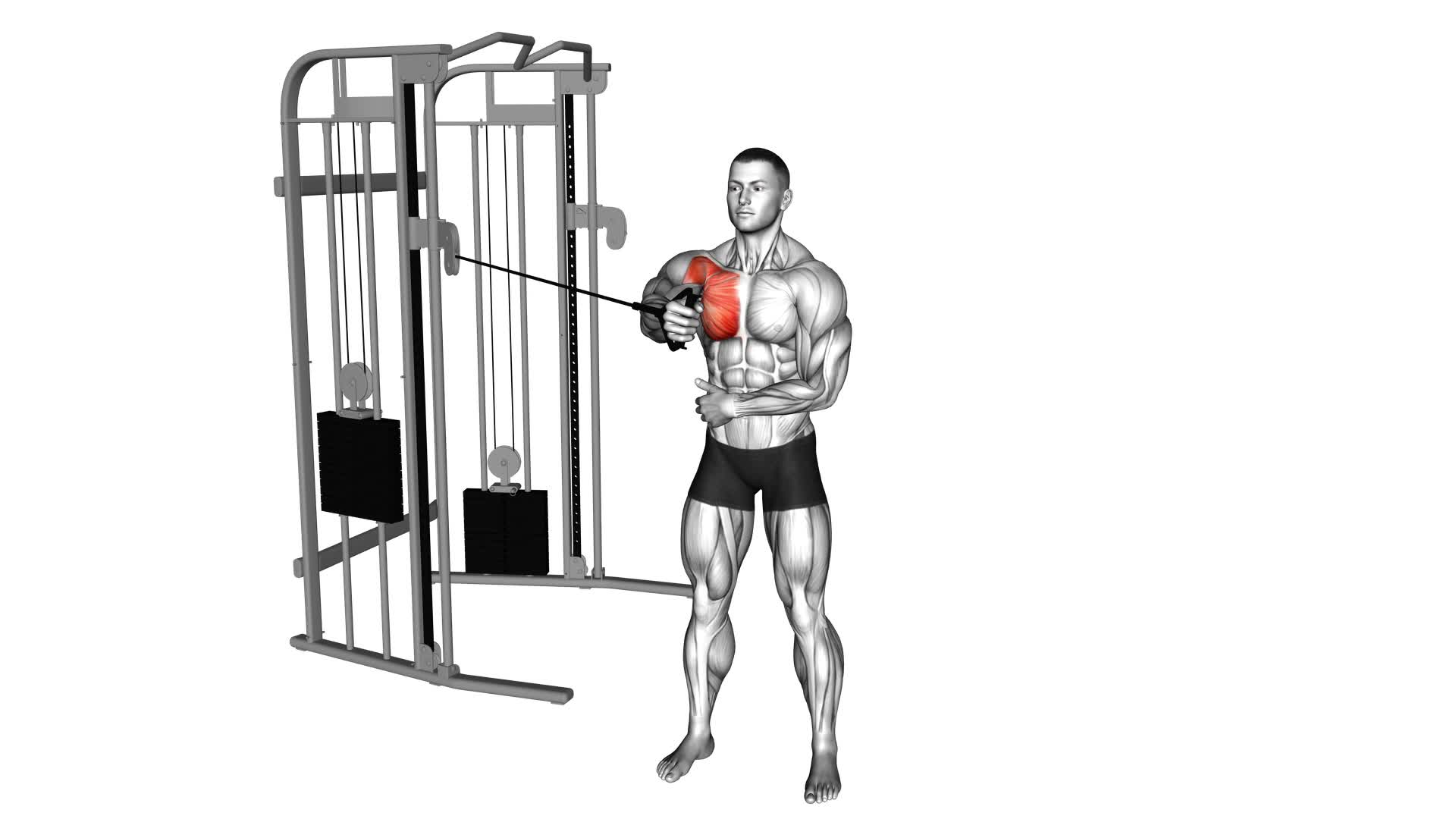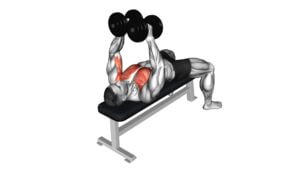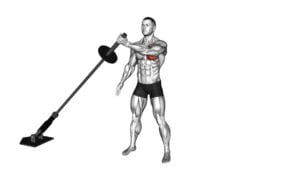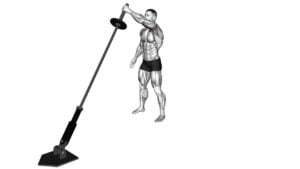Cable Standing Single Arm Fly – Video Exercise Guide & Tips

Are you looking for an effective exercise to target your chest muscles? Look no further than the Cable Standing Single Arm Fly!
Watch This Exercise Video
In this video exercise guide, we'll show you the proper form and technique to get the most out of this exercise.
Whether you're a beginner or advanced fitness enthusiast, we've got variations and modifications to suit your needs.
Avoid common mistakes and maximize your results with our helpful tips.
Get ready to strengthen and tone your chest with the Cable Standing Single Arm Fly!
Key Takeaways
- Targets chest, shoulders, and upper back muscles
- Engages stabilizer muscles for improved balance and coordination
- Helps correct strength imbalances between left and right sides of the body
- Focuses on isolating and working one side of the chest at a time
Benefits of the Cable Standing Single Arm Fly
You will experience significant upper body strength gains by incorporating the Cable Standing Single Arm Fly into your workout routine. This exercise targets the muscles in your chest, shoulders, and upper back, helping to improve your overall upper body strength and muscle definition.
One of the main benefits of the Cable Standing Single Arm Fly is that it allows you to isolate and work one side of your chest at a time. This is important because it helps to correct any imbalances in strength between the left and right sides of your body. By focusing on one side at a time, you can ensure that each side is working equally and efficiently.
Another benefit of this exercise is that it engages your stabilizer muscles. Since you're standing and using a cable machine, your core and leg muscles are activated to provide stability and support. This not only strengthens these muscles but also improves your overall balance and coordination.
In terms of technique, it's important to maintain proper form throughout the exercise. Stand tall with your feet shoulder-width apart and your knees slightly bent. Hold the cable handle with your arm extended out in front of you, palm facing down. Slowly bring your arm out to the side, keeping a slight bend in your elbow, until your arm is parallel to the floor. Pause for a moment, then return to the starting position. Repeat on the other side.
Incorporating the Cable Standing Single Arm Fly into your workout routine can provide numerous benefits for your upper body strength and muscle development. By targeting your chest, shoulders, and upper back, and engaging your stabilizer muscles, this exercise helps to improve overall strength, balance, and coordination. Remember to focus on proper technique and form for optimal results.
Equipment and Setup for the Exercise
To properly set up for the Cable Standing Single Arm Fly exercise, it's essential to have the necessary equipment and a proper setup. This exercise requires a cable machine with adjustable pulleys and a handle attachment. Begin by attaching the handle to the lowest pulley on the machine. Stand facing away from the machine and position yourself a few feet away from the pulley. Grab the handle with one hand and step forward, creating tension in the cable. Keep your feet shoulder-width apart and maintain a slight bend in your knees throughout the exercise.
The equipment setup for the Cable Standing Single Arm Fly is important because it allows you to effectively target your chest muscles and improve upper body strength. By using the cable machine, you can adjust the resistance to match your fitness level and gradually increase the weight as you progress. This exercise also helps to improve stability and balance by engaging your core muscles.
Now that you have set up the equipment, it's time to move on to the proper form and technique for the Cable Standing Single Arm Fly.
Proper Form and Technique for the Cable Standing Single Arm Fly
To perform the Cable Standing Single Arm Fly with proper form and technique, it's crucial to focus on optimal arm positioning. Keep your arm slightly bent and maintain a slight forward lean to engage your chest muscles effectively.
Additionally, be mindful of common mistakes such as using excessive weight or swinging your body, as these can compromise the effectiveness of the exercise and increase the risk of injury.
Optimal Arm Positioning
Achieve proper form and technique for the Cable Standing Single Arm Fly by maintaining optimal arm positioning throughout the exercise. To ensure you're getting the most out of this exercise, follow these tips:
- Keep your arm straight: Maintain a slight bend in your elbow, but avoid locking it. This will help target your chest muscles and prevent strain on your joints.
- Engage your core: A strong core will provide stability and support during the exercise. Keep your abs tight and your back straight to maintain proper form.
- Control the movement: Slowly bring your arm out to the side, focusing on squeezing your chest muscles. Avoid using momentum or swinging your arm, as this can lessen the effectiveness of the exercise.
Common Mistakes to Avoid
Maintain proper form and technique for the Cable Standing Single Arm Fly by avoiding these common mistakes.
One common mistake to avoid is improper breathing. It's important to exhale as you pull the cable towards your body and inhale as you return to the starting position. This helps to engage your core and stabilize your body throughout the movement.
Another mistake to avoid is incorrect weight selection. Choosing a weight that's too heavy can compromise your form and increase the risk of injury. On the other hand, using a weight that's too light may not provide enough resistance to effectively target and strengthen your muscles.
It's important to select a weight that challenges you while still allowing you to maintain proper form and control throughout the exercise.
Variations and Modifications for Different Fitness Levels
Now let's explore some options to progress the cable standing single arm fly for beginners and make adjustments for more advanced athletes.
There are several ways you can increase the difficulty of this exercise as you become more comfortable and stronger, such as using heavier weights or increasing the range of motion.
On the other hand, if you find the exercise too challenging, you can modify it by using lighter weights or reducing the range of motion.
It's important to find the right variations and modifications that suit your fitness level to ensure a safe and effective workout.
Progression Options for Beginners
To progress as a beginner, you can modify the cable standing single arm fly exercise based on your fitness level. Here are three options to help you gradually increase the difficulty of the exercise:
1) Reduced resistance: If you find the exercise challenging, start with a lighter weight on the cable machine. This will allow you to focus on mastering the proper form and technique before gradually increasing the resistance.
2) Wider stance: To make the exercise easier, you can widen your stance for better stability. This will help you maintain balance and control throughout the movement.
3) Decreased range of motion: As a beginner, you may find it helpful to limit the range of motion during the exercise. Start by performing smaller movements and gradually increase the range as you become more comfortable and stronger.
Adjustments for Advanced Athletes
To further challenge advanced athletes, there are several variations and modifications available for different fitness levels when performing the cable standing single arm fly exercise.
These advanced modifications and techniques can help take your workout to the next level and target specific muscle groups more effectively.
One option is to increase the weight on the cable machine to provide a greater resistance and challenge for your muscles.
Another modification is to perform the exercise in a staggered stance or with a single leg lifted off the ground, which adds an element of instability and engages your core muscles even more.
Additionally, you can try performing the fly exercise on a stability ball or incorporating a rotation at the end of the movement to further engage your obliques and improve overall core stability.
These advanced techniques will help you continue to progress and see results in your fitness journey.
Common Mistakes to Avoid While Performing the Exercise
During the exercise, be mindful of these common mistakes to avoid while performing the Cable Standing Single Arm Fly:
- Improper breathing technique: One common mistake is forgetting to breathe properly during the exercise. Remember to inhale as you lower the cable and exhale as you bring it back up. Proper breathing not only helps with oxygen flow, but it also helps maintain stability and control throughout the movement.
- Neglecting core stability: Another mistake is neglecting the importance of core stability. Your core muscles play a crucial role in maintaining proper form and balance during the exercise. Engage your core by drawing your belly button in towards your spine and keeping your abdominal muscles tight throughout the movement. This will help protect your lower back and improve overall stability.
- Using excessive weight: It's important to avoid using excessive weight when performing the Cable Standing Single Arm Fly. Using too much weight can compromise your form and lead to injury. Start with a weight that allows you to maintain proper technique and gradually increase the weight as you become stronger and more comfortable with the exercise.
Tips to Maximize Your Results With the Cable Standing Single Arm Fly
Maximize your results with the Cable Standing Single Arm Fly by incorporating these tips.
To ensure you're maximizing the effectiveness of this exercise, it's important to focus on your form and breathing technique.
Firstly, maintaining proper form is crucial for targeting the right muscles and avoiding injury. Start by standing with your feet shoulder-width apart and your knees slightly bent. Keep your core engaged and your back straight throughout the exercise. As you perform the fly, make sure to keep your arm extended and parallel to the floor, with a slight bend at the elbow. This will ensure that you're properly engaging your chest muscles.
Secondly, proper breathing technique is essential for maximizing your results. Remember to exhale as you bring your arm forward and inhale as you return to the starting position. This will help you maintain control and stability throughout the movement.
Frequently Asked Questions
How Many Sets and Reps Should I Do for the Cable Standing Single Arm Fly?
For the cable standing single arm fly, it's important to find the right balance of sets and reps for your fitness goals.
Start with 3-4 sets of 8-12 reps per arm to build strength and muscle.
If you're looking to increase endurance, try 2-3 sets of 15-20 reps.
Remember, form is key, so focus on maintaining a controlled movement throughout the exercise.
If you don't have access to a cable machine, you can try dumbbell flyes or resistance band flyes as alternatives.
Can I Use Dumbbells Instead of a Cable Machine for This Exercise?
Yes, you can use dumbbells instead of a cable machine for the cable standing single arm fly. This exercise targets your chest and shoulder muscles. It's a great alternative if you don't have access to a cable machine.
To perform the exercise with dumbbells, stand with your feet shoulder-width apart, hold a dumbbell in one hand, and extend your arm out to the side. Bring the dumbbell back in a controlled motion, engaging your chest muscles.
Is It Normal to Feel a Stretch in My Chest During the Cable Standing Single Arm Fly?
Feeling a stretch in your chest during the cable standing single arm fly is normal. This exercise targets your chest muscles and helps strengthen and tone them.
However, if you don't have access to a cable machine, you can try alternative variations using dumbbells. These variations, such as the standing single arm chest fly with dumbbells, can provide a similar chest muscle engagement and are a great alternative for this exercise.
Can I Incorporate This Exercise Into a Full-Body Workout Routine?
You can definitely incorporate the cable standing single arm fly into your full-body workout routine. It offers several benefits, such as improving muscle imbalances, enhancing stability, and increasing overall strength.
To properly engage your core during this exercise, focus on keeping your abs tight and your back straight. This will help stabilize your body and prevent any unnecessary strain on your lower back.
Remember to start with lighter weights and gradually increase as you become more comfortable with the movement.
How Often Should I Perform the Cable Standing Single Arm Fly to See Results?
To see results from the cable standing single arm fly, you need to consider the frequency of performing this exercise. It's important to find the right balance between challenging your muscles and allowing them to recover.
Aim to include this exercise in your routine 2-3 times a week. Start with 2-3 sets of 10-12 reps per arm, gradually increasing the intensity as you progress.
Remember to listen to your body and adjust the frequency and intensity accordingly.
Conclusion
In conclusion, the Cable Standing Single Arm Fly is an effective exercise for targeting the chest and shoulder muscles.
It can be done using a cable machine and proper form and technique are important for maximum results.
This exercise can be modified for different fitness levels and it's essential to avoid common mistakes to prevent injury.
By following these tips, you can maximize your results and strengthen your upper body with the Cable Standing Single Arm Fly.

Author
Years ago, the spark of my life’s passion ignited in my mind the moment I stepped into the local gym for the first time. The inaugural bead of perspiration, the initial endeavor, the very first surge of endorphins, and a sense of pride that washed over me post-workout marked the beginning of my deep-seated interest in strength sports, fitness, and sports nutrition. This very curiosity blossomed rapidly into a profound fascination, propelling me to earn a Master’s degree in Physical Education from the Academy of Physical Education in Krakow, followed by a Sports Manager diploma from the Jagiellonian University. My journey of growth led me to gain more specialized qualifications, such as being a certified personal trainer with a focus on sports dietetics, a lifeguard, and an instructor for wellness and corrective gymnastics. Theoretical knowledge paired seamlessly with practical experience, reinforcing my belief that the transformation of individuals under my guidance was also a reflection of my personal growth. This belief holds true even today. Each day, I strive to push the boundaries and explore new realms. These realms gently elevate me to greater heights. The unique combination of passion for my field and the continuous quest for growth fuels my drive to break new ground.







